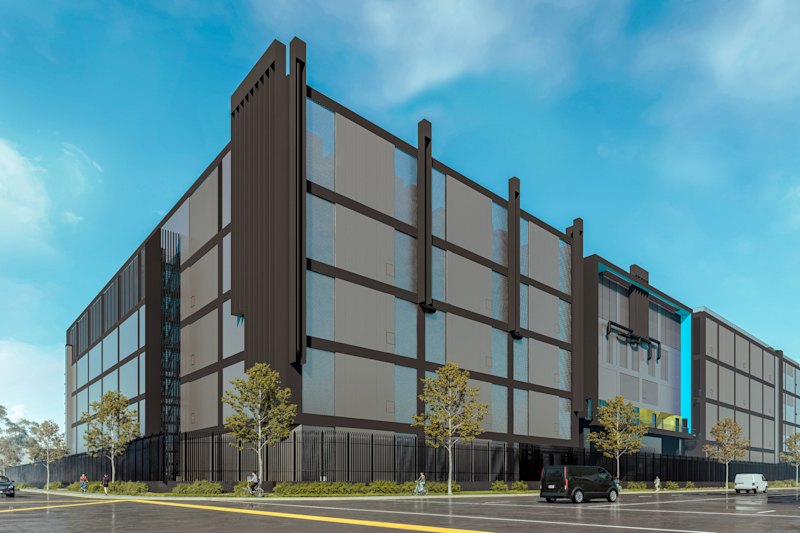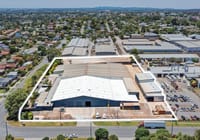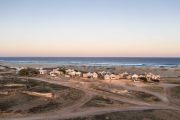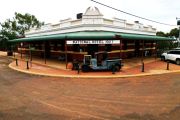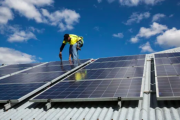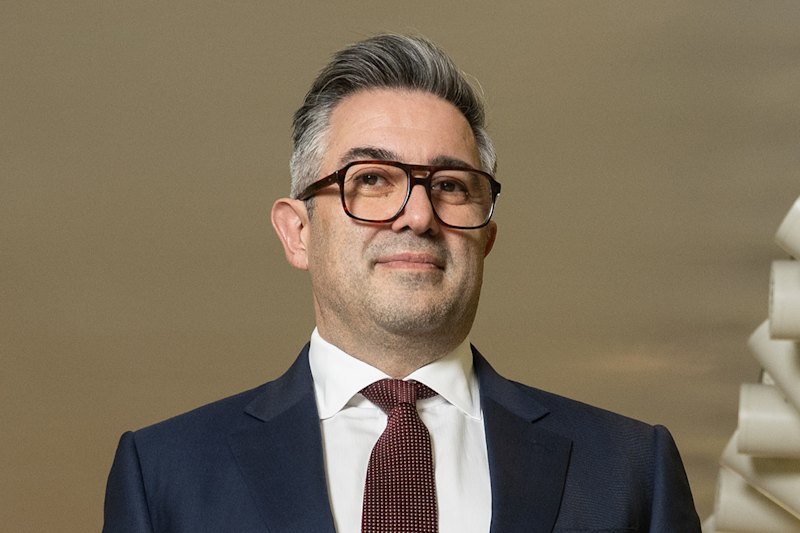
Lendlease’s Lombardo fights back against Mirvac’s funds raid
- Follow our live coverage of the August 2025 ASX reporting season.
Lendlease chief executive Tony Lombardo has launched a robust defence of its $10 billion property funds business that rival Mirvac is angling to take over, talking up the funds’ performance and growth prospects under his team.
Lombardo hit back at the rival fund manager – without naming Mirvac or its chief Campbell Hanan – as Lendlease reported a turnaround net profit of $225 million in the year to June from the previous year’s largest loss in recent memory of $1.5 billion.

But Lombardo has a more immediate fight on his hands as Mirvac taps into rising disgruntlement among institutional investors including Hostplus in the three funds in play – retail, industrial and office. The vehicles make up Lendlease’s Australian Prime Property Fund series.
The first showdown between the two ASX-listed property giants is set for mid-September after Hostplus called a meeting for the $2 billion Australian Prime Property Fund Industrial fund to vote on sacking Lendlease and installing Mirvac as the manager in its place.
Under Lendlease’s stewardship, the industrial fund was on course to double to $4 billion in value over the next seven years, Lombardo said.
“Each of the funds has an outlook plan to grow the next seven years of 11 per cent-plus total return,” he said. “It’s actually got a very, very strong growth outlook.”
Still to be scheduled is a separate vote over control of the $2.8 billion APPF Retail fund, where Hostplus has also called for an investor meeting. Also, potentially in play is the third $5.8 billion APPF Commercial which holds stakes in landmark buildings such as Sydney’s 55-storey Salesforce Tower and 1 Farrer Place.
Lombardo went on the offensive during Monday’s earnings call, flagging Lendlease’s success in winning new mandates and setting up new funds under its investment platform. Among them is a $775 million credit partnership – for which it would close its first deal in the next four weeks – covering multifamily residential, offices and life sciences in the US.
The company was also planning a similar fund in Australia, with a likely initial $500 million mandate, Lombardo said.
The APPF Industrial fund had returned 11.3 per cent over the past decade, the office fund was on track to increase to $10 billion in value and the retail fund was set to rise to $5 billion in value, Lombardo said.
Lendlease’s improved performance over the year reflected a pick-up after the losses of FY24, when the company took a hit worth nearly $1.4 billion in restructuring costs – redundancy payments alone cost it nearly $117 million – after activist shareholders forced changes that included selling off its US and UK construction arms, US military housing portfolio and focusing its construction and development activities in Australia.
While the fight over funds management has yet to play out, investors responded positively to the return to full-year profit Lendlease announced on Monday, sending the shares up 37¢, or 6.7 per cent, to $5.92.
Lendlease also said it would spend $500 million buying back shares to boost the value of shareholders’ holdings.
“There’s still a significant amount that they need to do in the next 12 months. However, they expressed a degree of confidence in, and articulating, what needs to be done over the next year,” UBS analyst Tom Bodor told The Australian Financial Review.
“That’s where the market has taken some comfort.”
A year after launching into the dramatic restructure, Lendlease’s net tangible assets per security have risen to $6.55 from $6.07. It declared a final dividend of 17¢ – with a franking value of 10.4¢ – bringing its full-year dividend to 23¢, up from a total 16¢ in FY24.
Full-year earnings per security came in at 55.9¢, at the lower end of the 54¢ to 62¢ range it had been guiding.
Operating earnings after tax swung from a $1.2 billion loss to a profit of $386 million.
The company’s net debt fell by $400 million from end-December to $3.4 billion, putting gearing at an “elevated” 26.6 per cent. Lendlease said gearing would fall to “at or below” 15 per cent by the end of the current year.
One result of the previous year’s shock treatment was that corporate costs in the recent year to June fell by two-thirds to $127 million.
Lendlease said it had “announced or completed” $2.5 billion worth of capital recycled from the sale of assets or the exit of operations during the year and it planned a further $2 billion in capital recycling during this year.
The company also said performance was improving in its remaining three business arms.
Operating EBITDA earnings of its investments business rose 69 per cent to $313 million and total funds under management rose 3 per cent to $48.9 billion.
Operating EBITDA earnings of Lendlease’s development arm jumped by $118 million to $316 million, boosted by the settlement revenue from apartments at its luxury One Sydney Harbour project and a sale during the year of its Capella Capital financing arm.
Lendlease said its Australian development pipeline closed the year at $9.8 billion, down from $11.8 billion a year earlier, and had secured an additional $2.5 billion project since June 30.
Operating EBITDA earnings of Lendlease’s construction business – now solely focused on Australian building – nearly halved to $33 million from $60 million as a result of two loss-making projects in the first half of the year. The construction business secured $5 billion-worth of new work in the year, up from $1.7 billion in FY24.
Lendlease forecast earnings per security for the current year to drop to the 28¢ to 34¢ range, well down on the past year’s 50.1¢, as a result of fewer scheduled development completions.
It said earnings would rebound in FY27 on the back of One Circular Quay and Victoria Harbour project completions, along with earnings coming from its joint venture with The Crown Estate in the UK.
The company agreed in May to sell a half stake in six urban regeneration projects it was developing in the UK to the manager of the British Royal Family’s property holdings in a $300 million deal.


